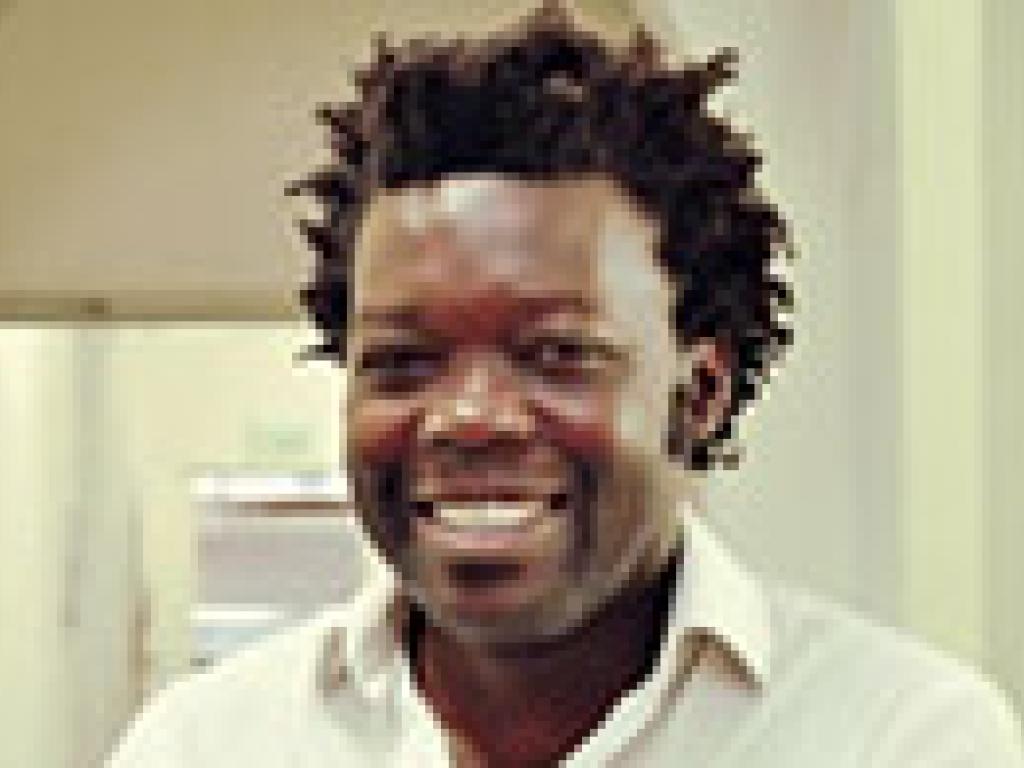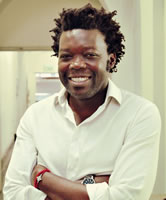Finding NEMO: the first visual evidence of immune response higher-order structures, using super-resolution microscopy


Scientists at the CSIR and The University of Cape Town (UCT), in collaboration with colleagues at Institut Pasteur and University College London (UCL), have used super-resolution microscopy to visualise for the first time a key regulatory protein organized in a higher order structure in cells (journal publication details below). The protein called NEMO, for NF-kB Essential MOdulator (also called IKKγ) is critical to several basic cellular processes, and is implicated in our immune and inflammatory responses as well as in cancer.
Many scientists have speculated that proteins like NEMO, responsible for relaying critical signals from outside the cell, do so in a highly coordinated manner. One way in which they imagined this happened is by concentrating these proteins into molecular machines or supramolecular organizing centres, linked together in higher-order structures so that they could create a coordinated response. Despite such speculation, such higher-order structures have never been observed in cells until now. "Fortunately, by combining the fields of physics, biology and chemistry, scientists have been able to overcome this problem," says Dr. Musa Mhlanga, co-senior author based part-time in the Institute of Infectious Disease and Molecular Medicine (IDM) at UCT.
Generally, we imagine the cell to be a bag of molecular soup with the absence of defined structure within the cellular space or cytoplasm. However, until recently, there were no simple approaches to visually prove the existence of such highly ordered and organized cytoplasmic structures by light microscopy. This is largely due to the very basic physical properties of light itself, which cannot resolve objects below 200 nanometres in size. Since many structures in the cell may be smaller than this, they cannot be visualised with conventional microscopy.
Using the state-of-the-art custom-built super-resolved fluorescence microscope, developed by the Mhlanga laboratory and the first of its kind in South Africa, co-first author Janine Scholefield and Anca Savulescu (both based in the Mhlanga laboratory) were able to interrogate the structure and prove its existence. They also showed that only a few of these supramolecular organizing centres were required for a cell to respond to an outside signal, as hypothesized by the Harvard structural biologist Professor Hao Wu.
Importantly, the team was also able to show that cells from patients with a mutation in NEMO, which causes the severe genetic disease Incontinentia Pigmenti (IP) in females, had a damaged version of the NEMO higher-order structure with the lattices absent. IP, also known as "Block-Siemens" syndrome, is a genetic dermatological disorder affecting the skin, hair, teeth and central nervous system.
Dr. Mhlanga is passionate about what this discovery means, globally and to South Africa: "This work germinated from, firstly, a deep insight from Dr. Fabrice Agou, co-senior author who heads up the Chemogenomic and Biological Screening Core Facility at Institut Pasteur in Paris, and secondly, a desire to answer a fundamental long-standing question in signal transduction using cutting-edge technology that we developed here in South Africa. Our goal is that scientists in Africa should not simply be consumers of fundamental scientific discoveries; rather they should be active contributors and producers to this body of basic scientific knowledge. We would like to train the next generation of scientists in Africa to become excellent scientists who routinely produce ground-breaking work. In this endeavor, we are very grateful for the continued support we receive from the SA Department of Science and Technology for several aspects of this work over the last years."
Dr. Mhlanga heads the CSIR's Synthetic Biology programme through his Gene Expression and Biophysics research group, and is Honorary Research Associate in the Division of Chemical Systems & Synthetic Biology, UCT, as well as a Member of the IDM. In an exciting new development, Mhlanga now leads the newly established Biomedical Translational Research Initiative (BTRI) based in the IDM, an initiative supported by the SA Department of Science and Technology through a partnership between UCT and the CSIR. The BRTI is expected to have a profound impact on IDM-based research and training programmes by significantly enhancing the light microscopy platform at UCT. The BTRI is located in a purpose-built laboratory in the IDM, and has the ultimate goal of translation of biomedical research results into products that are clinically useful and commercially viable.
Original paper:
J Scholefield, R Henriques, AF Savulescu, E Fontan, A Boucharlat, E Laplantine, A Smahi, A Israël, F Agou, MM Mhlanga. Super-resolution microscopy reveals a preformed NEMO lattice structure that is collapsed in Incontinentia Pigmenti. Nature Communications (2016) 7:12629, doi: 10.1038/ncomms12629.
